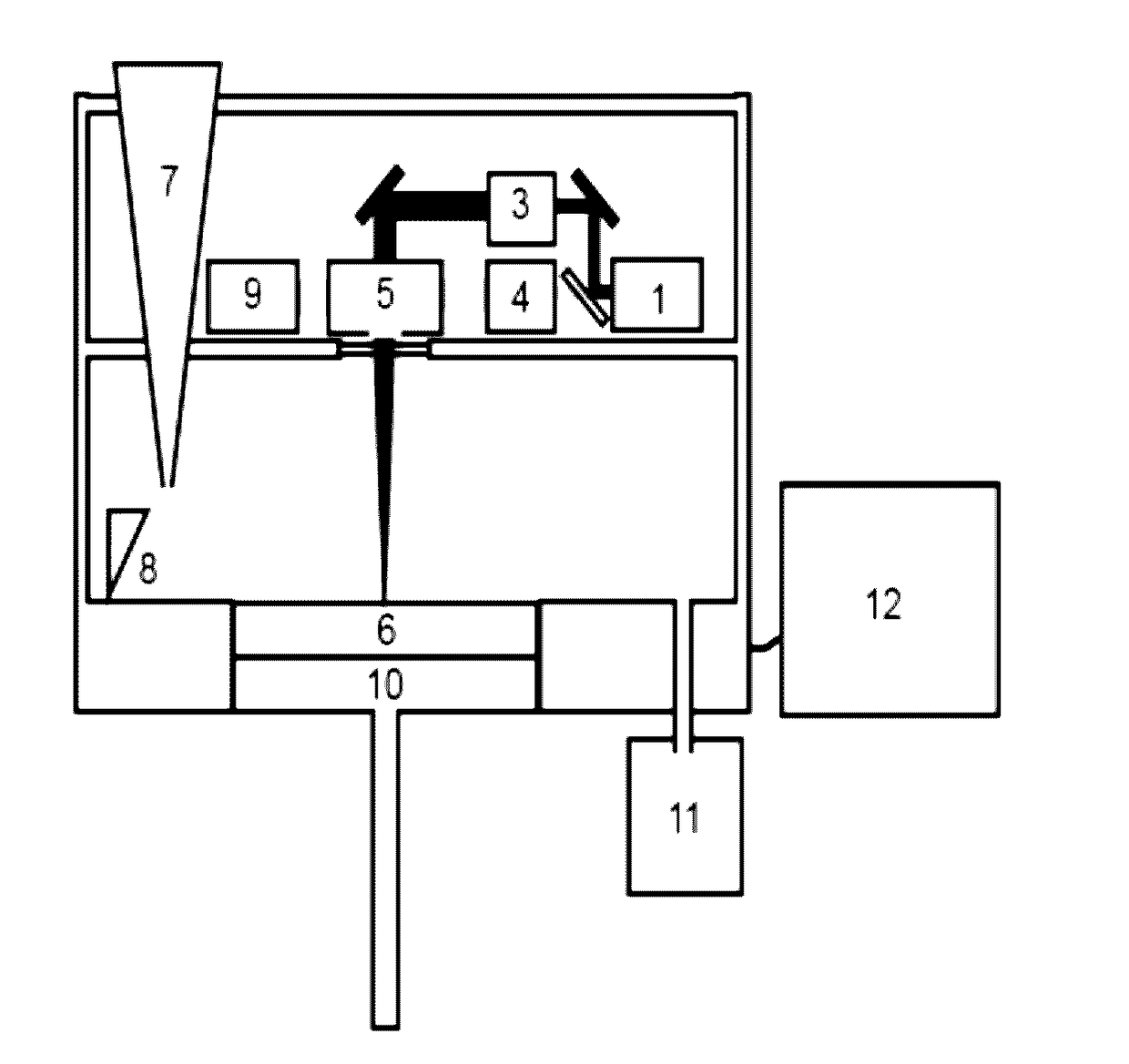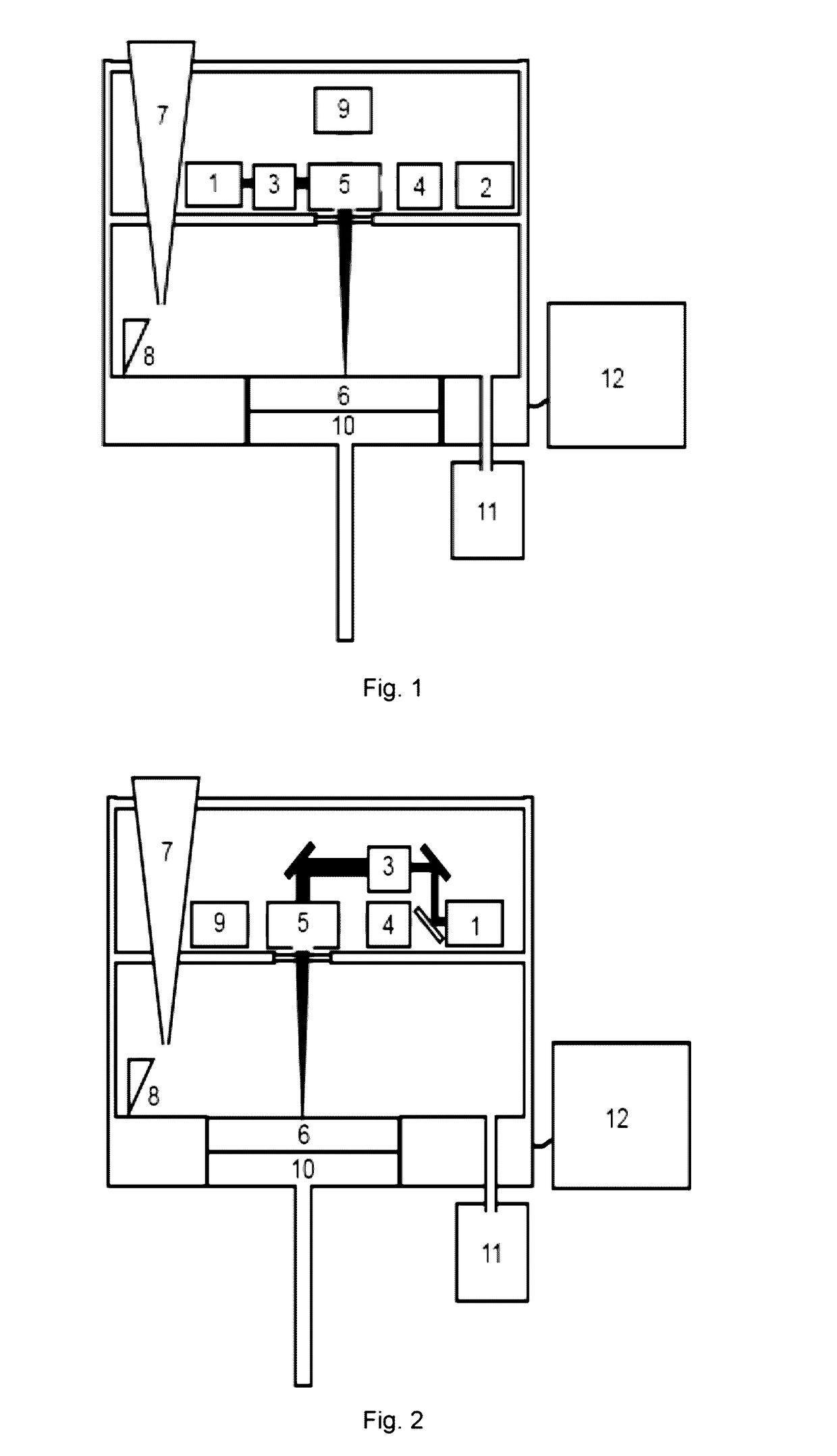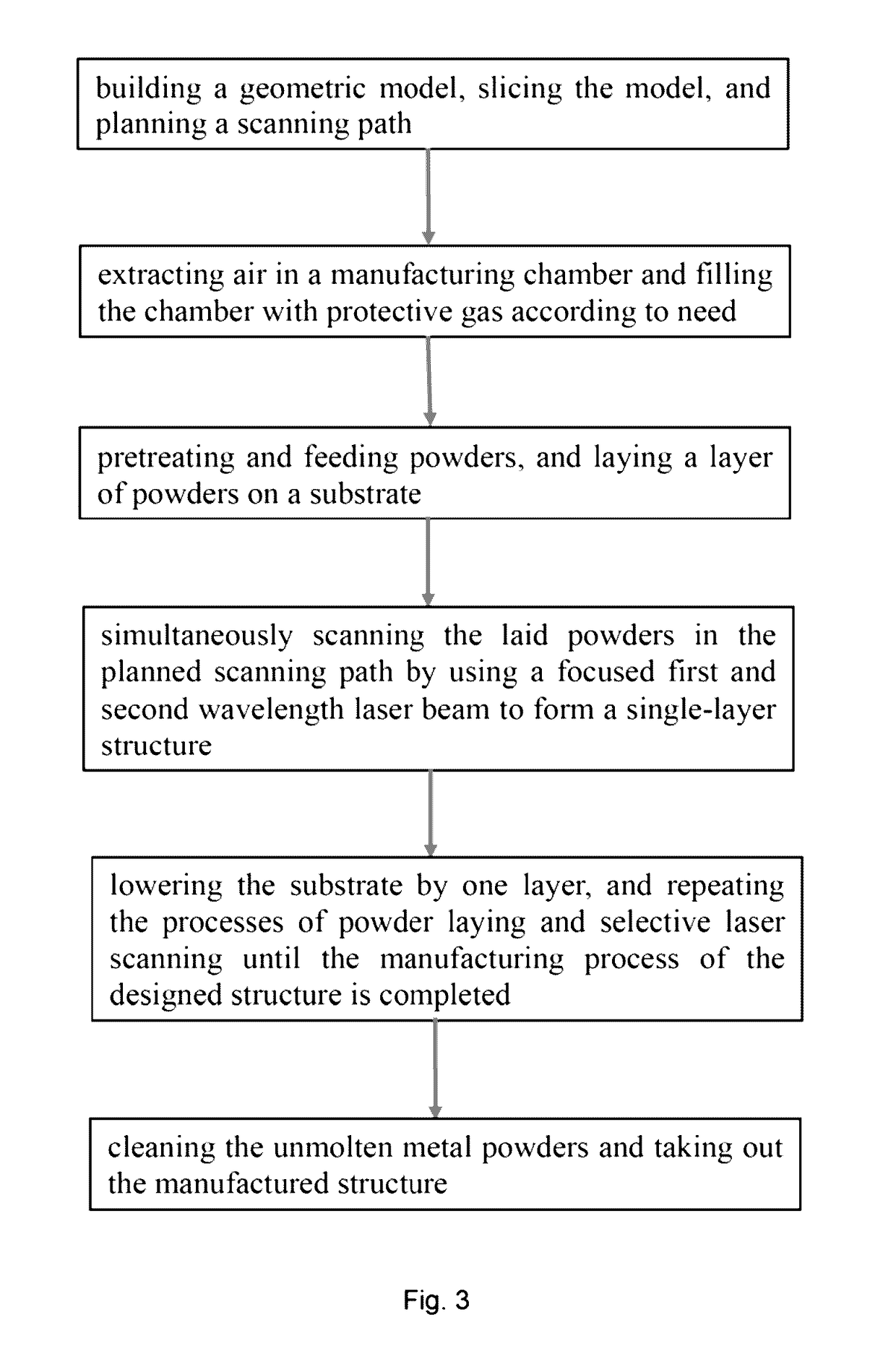Multi-wavelength laser rapid prototyping system and method
- Summary
- Abstract
- Description
- Claims
- Application Information
AI Technical Summary
Benefits of technology
Problems solved by technology
Method used
Image
Examples
example 1
[0061]The present invention will now be described in detail with reference to FIGS. 1 and 3 by taking the multi-wavelength selective laser rapid prototyping of ZrO2-Al2O3 ceramic as an example. The selected ZrO2-Al2O3 ceramic powders are spherical powders having particle sizes from 30 μm to 60 μm.
[0062]Firstly, a geometric model of ceramic structure is built by using a computer drawing software, the model is sliced, and the scanning path is planned. The air in manufacturing chamber is then extracted. The pretreatment and feeding of powders are carried out by the powder feeding components 7. A layer of ceramic powders is laid on substrate 7 by using the powder laying components 8. The thickness of the laid monolayer ceramic powders is 60 μm. A 532 nm laser beam outputted by a green light laser source 1 with a laser power of 50-150 W is selected as the first wavelength laser beam; and a 10.6 μm laser beam outputted by a CO2 laser source 2 with a laser power of 140-400 W is selected as...
example 2
[0064]The present invention will now be described in detail with reference to FIGS. 2 and 3 by taking the multi-wavelength selective laser rapid prototyping of titanium alloy as an example. The selected titanium alloy powders are spherical powders having particle sizes from 20 μm to 30 μm.
[0065]Firstly, a geometric, model of titanium alloy structure is built by using a computer drawing software, the model is sliced, and the scanning path is planned. The air in manufacturing chamber is then extracted and filled with argon as a protective gas. The pretreatment and feeding of powders are carried out by the powder feeding components 7. A layer of titanium alloy powders is laid on substrate 7 by using the powder laying components 8. The thickness of the laid monolayer titanium alloy powders is 50 μm. As shown in FIG. 2, a 532 nm laser beam outputted by the light laser source 1 with a laser power of 30-50 W is selected as the first wavelength laser beam; and a 1064 nm laser beam outputted...
PUM
| Property | Measurement | Unit |
|---|---|---|
| Size | aaaaa | aaaaa |
| Size | aaaaa | aaaaa |
| Wavelength | aaaaa | aaaaa |
Abstract
Description
Claims
Application Information
 Login to View More
Login to View More - Generate Ideas
- Intellectual Property
- Life Sciences
- Materials
- Tech Scout
- Unparalleled Data Quality
- Higher Quality Content
- 60% Fewer Hallucinations
Browse by: Latest US Patents, China's latest patents, Technical Efficacy Thesaurus, Application Domain, Technology Topic, Popular Technical Reports.
© 2025 PatSnap. All rights reserved.Legal|Privacy policy|Modern Slavery Act Transparency Statement|Sitemap|About US| Contact US: help@patsnap.com



